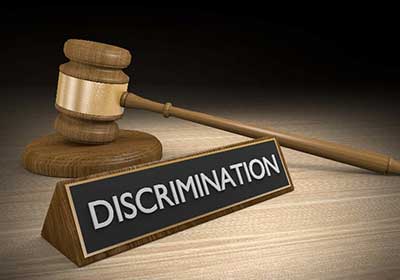Date: 23/03/2023
Relevance: GS-2: Issues Relating to the Development and Management of Social Sector/Services relating to Health, Education, and Human Resources.
Key Phrases: Discrimination, Variations of graded inequality, Role of Meritocracy in Discrimination, Hierarchy of campus, Principle of Equal Opportunity, credentials prejudice.
Why in News?
- The recent suicide of a Dalit undergraduate student of chemical engineering at the Indian Institute of Technology (IIT) Bombay has brought to light the discrimination faced by students from marginalized communities in these premier institutes.
- While the institute’s investigation committee found no evidence of direct caste-based discrimination, it is important to understand the subtle and continuous process of discrimination that happens through everyday doses, steadily creating an atmosphere of “us” and “them”.
A continuous process
- Establishing causal links to discrimination can be a challenging task, particularly in comparison to hard sciences.
- However, the absence of tools to establish causality should not be used as evidence to negate the existence of discrimination.
- Discrimination takes various forms and operates through everyday doses that create an atmosphere of "us" and "them".
- It takes subtle, seemingly innocuous forms such as a smile combined with a frown, a wince, a hand gesture, or just silence.
The Role of Meritocracy in Discrimination:
- A discussion on discrimination at the IITs needs to be cantered on the idea of merit, as it is the embedded notion of merit that gives license to discriminate.
- The political philosopher, Michael Sandel, presented a scathing critique of meritocracy as a societal ideal and argues how hubris among the elites and politics of humiliation are natural outcomes of meritocracy.
- Some upper-caste students at the IITs, knowingly or unknowingly, embody what Sandel calls “credentials prejudice” as symptomatic of meritocratic arrogance.
- This happens when elites tend to “look down on those who do not rise”. Such an approach “undermines social recognition and esteem for those who lack the credentials the system rewards”.
- Variations of graded inequality and, consequently, discriminatory judgments about one’s so-called abilities are deeply entrenched within the veneer of merit at the IITs.
Causes of Discrimination:
- Hierarchy of campus:
- As soon as one steps foot inside an IIT campus, they are introduced to a well-established hierarchy system.
- The first level of this hierarchy is based on whether you are an undergraduate or postgraduate student.
- Undergraduates tend to hold a superiority complex over postgraduates, resulting in limited interaction between the two cohorts.
- The Role of Entrance Exam Rank:
- For undergraduates, one’s abilities are immediately tattooed in the minds of everyone based on one’s rank in the entrance exams.
- Much like the accident of birth, one’s branch of studies is an accident of one’s rank.
- This then becomes the unique identifier of this phantom called merit; then, slowly, the lines between being objective and objectifying get blurred.
- Impact of Branch and Caste:
- The accident of the branch of studies results in disinterest and disillusionment among some students. But it plays out differently among students across castes.
- Upper-caste:
- Upper-caste disinterested students may use their branch of study as an opportunity to explore other facets, which then acts as a justification for bad academic performance in college.
- However, they have implicit confidence that their connections, affluence, cultural capital, or social networks can bail them out when needed.
- Lower Caste:
- On the other hand, students on “reservation” feel trapped in a branch, not of their choice, and lack similar connections, affluence, or cultural capital as their upper-caste counterparts.
- They do not have the luxury to explore or take the same risks, as they fear being stigmatized for bad academic performance.
- The Inequality of Merit:
- The idea of merit fails to account for the starting points, trajectories, social networks, affluence, prejudices, hardships, and countless other factors that shape a person.
- The concept of using rank or grades as a proxy for merit is flawed as it does not consider the uphill battle that many individuals from historically marginalized backgrounds face.
The Principle of Equal Opportunity
- The principle of equal opportunity is only a corrective measure of historical injustice. It is not a sufficient principle to foster an equitable society devoid of discrimination.
- It’s not enough to guarantee equal access to education, healthcare, and job opportunities.
- It’s also necessary to cultivate a sense of belonging and mutual respect across the lines of social class and culture.
- An equitable society should nurture a sense of belonging that respects the starting points, the trajectories, the social networks, the affluence, the prejudices, hardships, and innumerable other factors that shape us.
Conclusion:
- The issue of discrimination in the IITs is a deeply entrenched one that needs to be addressed at multiple levels.
- It requires a constant engagement with the politics of assertion and an understanding of the pervasive nature of discrimination.
- The IITs need to move beyond the principle of equal opportunity and create a more inclusive and equitable environment that fosters diversity and equal representation.
Source: The Hindu
Mains Question:
Q. What are the various forms of discrimination faced by students at Institutes of Higher Education in India? How does the idea of merit contribute to discrimination and how can it be addressed?







